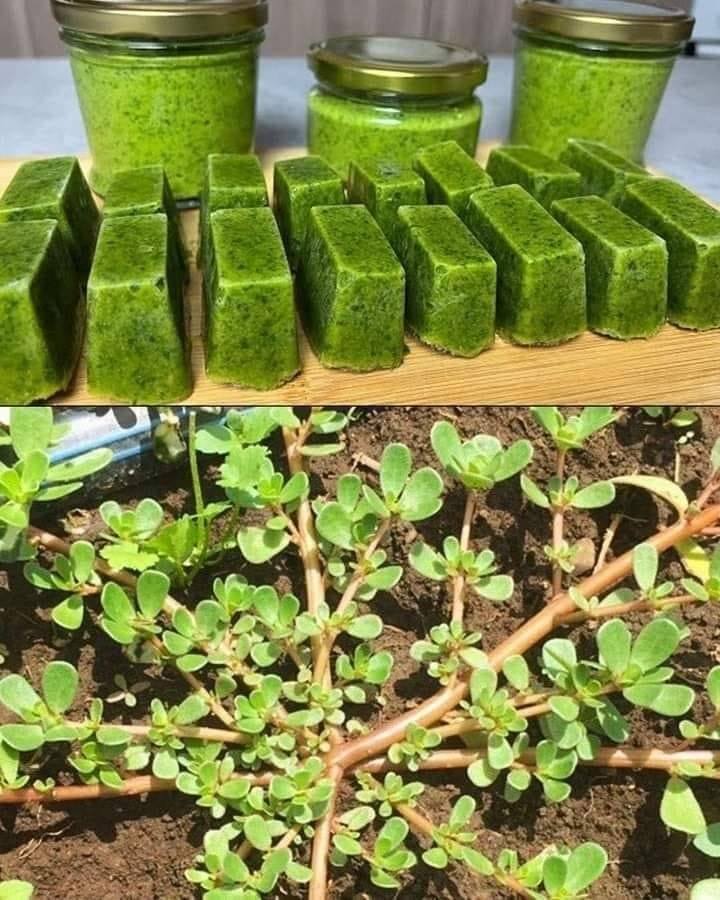ADVERTISEMENT
of this important nutrient, making it an excellent option for vegans and vegetarians.
For Complete Cooking STEPS Please Head On Over To Next Page Or Open button (>) and don’t forget to SHARE with your Facebook friends
#### 2. **Packed with Antioxidants**
Purslane is loaded with powerful antioxidants like **vitamin E**, **vitamin C**, and **beta-carotene**. These antioxidants help protect the body’s cells from oxidative stress and free radical damage, which can contribute to chronic diseases and aging. Antioxidants play a critical role in maintaining healthy skin, fighting inflammation, and supporting immune health.
#### 3. **A Great Source of Vitamins and Minerals**
This humble green is an excellent source of several essential vitamins and minerals, including:
– **Vitamin A**: Essential for maintaining healthy vision and immune function.
– **Vitamin C**: Boosts the immune system and promotes skin health.
– **Vitamin E**: An antioxidant that helps maintain skin health and protect cells from damage.
– **Magnesium**: Supports muscle and nerve function, as well as heart health.
– **Iron**: Vital for red blood cell production and preventing anemia.
– **Potassium**: Helps regulate blood pressure and fluid balance.
#### 4. **Supports Healthy Digestion**
Purslane is high in **fiber**, which promotes healthy digestion. Eating fiber-rich foods can help prevent constipation, regulate bowel movements, and support overall gut health. A healthy digestive system is crucial for absorbing nutrients, maintaining energy levels, and supporting the body’s detoxification processes.
#### 5. **Helps Regulate Blood Sugar Levels**
The antioxidant and fiber content in purslane can help in managing blood sugar levels. Some studies suggest that purslane may help improve insulin sensitivity and reduce blood sugar spikes, making it a great addition to the diet for those managing type 2 diabetes or prediabetes.
#### 6. **Anti-Inflammatory Properties**
Chronic inflammation is linked to a wide range of health issues, including heart disease, arthritis, and autoimmune conditions. Purslane contains compounds that have been shown to have **anti-inflammatory effects**, which may help reduce the risk of these conditions. The high omega-3 content in purslane is also particularly beneficial in fighting inflammation in the body.
#### 7. **Promotes Skin Health**
The high levels of vitamins A and E in purslane are fantastic for **skin health**. Vitamin A helps with cell regeneration and repairing skin tissue, while vitamin E helps protect the skin from damage caused by UV rays and pollution. Additionally, purslane’s anti-inflammatory properties can soothe irritated or inflamed skin conditions, such as eczema or psoriasis.
### Culinary Uses of Purslane
Purslane is a versatile green that can be used in a variety of ways in the kitchen. Its slightly tangy, lemony flavor and succulent texture make it a great addition to both raw and cooked dishes. Here are a few ideas for incorporating purslane into your meals:
– **Salads**: Toss fresh purslane leaves into salads for a peppery, tangy flavor. It pairs well with other greens like spinach or arugula and adds a nice crunch.
– **Smoothies**: Add a handful of purslane to your green smoothie for an extra boost of nutrients without altering the flavor too much.
– **Soups and Stews**: Stir purslane into soups and stews at the end of cooking for a fresh, earthy addition.
– **Wraps and Sandwiches**: Use purslane leaves as a wrap or layer them in sandwiches as an alternative to lettuce or spinach.
– **Sautéed or Stir-fried**: Lightly sauté purslane with garlic and olive oil for a delicious side dish that complements your main course.
– **Pickled**: In some cultures, purslane is pickled for a tangy condiment that’s served alongside other dishes.
### How to Harvest and Prepare Purslane
If you’re lucky enough to find purslane growing in your garden or the wild, it’s relatively easy to harvest. Here’s how you can gather and prepare this nutritious plant:
– **Harvesting**: Pick the young, tender leaves and stems of purslane. Older, tougher stems can be discarded or used in compost. Make sure you’re harvesting from an area that hasn’t been treated with pesticides or chemicals.
– **Cleaning**: Rinse the leaves and stems thoroughly to remove dirt and insects. You can then use the fresh leaves in your dishes or store them in the fridge for up to 3-4 days.
### Is Purslane Safe to Eat?
Purslane is perfectly safe to eat and is commonly used in many parts of the world. However, as with any wild plant, be sure to properly identify it before harvesting and consuming it. If you’re not sure about foraging, buying purslane from a local farmer’s market or grocery store is a great way to ensure you’re getting the right plant.
### Conclusion: Why Purslane Deserves More Attention
Purslane may be an underrated plant, but it’s undeniably one of nature’s most nutritious and versatile offerings. Whether you find it in your backyard or buy it at the market, adding purslane to your diet is an easy and delicious way to boost your health. From its heart-healthy omega-3 fatty acids to its high vitamin and mineral content, this humble plant is full of surprising benefits.
Next time you come across purslane, don’t dismiss it as just another weed. Instead, give it a try in your cooking and reap the many benefits this little green has to offer. It’s time to put **purslane** on the map as a superfood!
